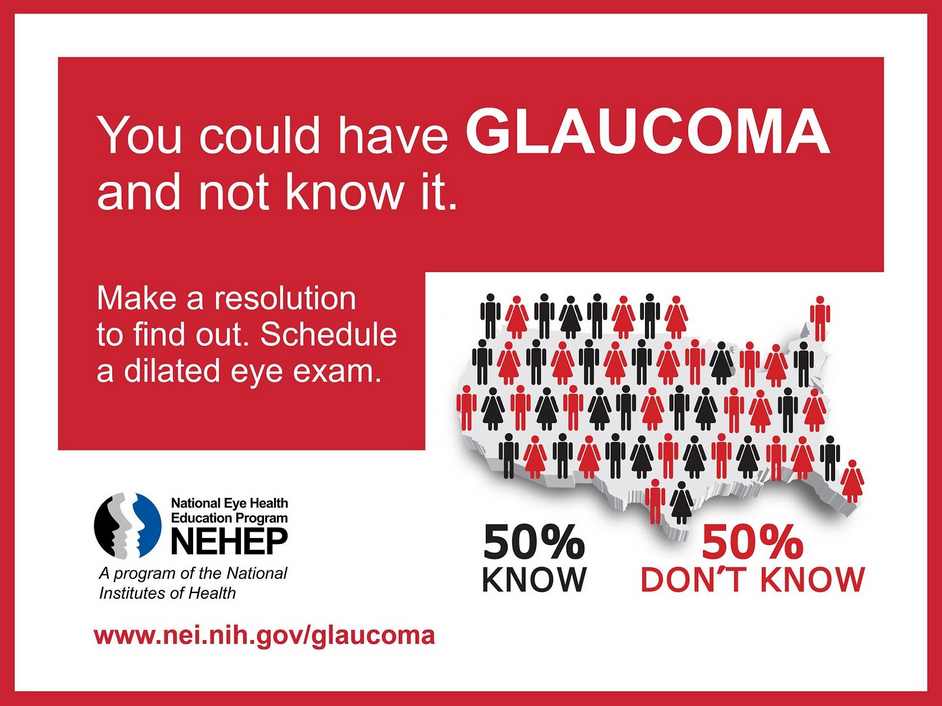
January is National Glaucoma Awareness Month! This awareness month presents an important reminder about the need to care for our eyes as we grow older and to get regular eye exams.
Glaucoma is the leading cause of vision loss and blindness in the United States. There is no cure for glaucoma but early treatment can often stop the damage and protect your vision. The only way to find out if you have glaucoma is to get a comprehensive dilated eye exam.
What do you need to know about glaucoma?
- Glaucoma can cause vision loss and blindness, which cannot be reversed.
Glaucoma results from fluid to building up in the eye, causing pressure that can damage the optic nerve, which transfers visual images to your brain. Open-angle glaucoma, the most common type, happens gradually as the eye does not drain fluid as well as it should. Angle-closure glaucoma occurs when a person’s iris blocks the eye’s drainage angle.
- There are no early symptoms.
Glaucoma often has no early warning signs. Only advanced glaucoma will affect a person’s vision. You may not realize anything is wrong until the damage is quite severe. Blind spots in a person’s peripheral (side) vision are often the first noticeable signs.
- Half of the people living with glaucoma in the United States don’t know they have it.
Nearly 3 million people in the United States have glaucoma. However, because it often develops slowly, people often do not notice that their vision is changing and therefore do not see an eye doctor until the disease has begun to cause vision loss.
- Some people are at a higher risk than others.
Glaucoma is most common in adults over the age of 60. African Americans and Hispanic/Latino individuals face higher risk of developing glaucoma. Other medical issues such as diabetes, high blood pressure and heart disease may increase the risk of developing glaucoma. There is also a higher likelihood of developing glaucoma if there is a family history of the disease.
- There is only one way to know if you have glaucoma.
The only way to find out if you have glaucoma is to get a comprehensive dilated eye exam. During this exam, an eye care professional places drops in your eyes to widen the pupil and look for signs of the disease in the optic nerve.
If you do show signs of glaucoma, a doctor can prescribe medications or prescription eye drops to reduce pressure in the eye. There are also surgical interventions if the medications are not sufficient. Early detection and consistent treatment can control glaucoma and reduce the likelihood of further vision loss.
For more information, please visit the National Eye Institute or find an eye doctor near you!

